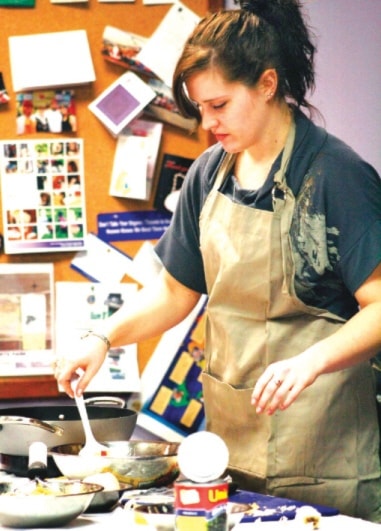In one of the many health and food related sessions that peppered this year’s Women’s Conference, a registered dietitian and a dietetic intern from the University of Alberta taught woman useful tools to create healthy, wholesome meals.
“We wanted people to enjoy healthy eating,” said Kerry Huber, a registered dietitian with Alberta Health Services.
Huber used four main topical categories to emphasize healthy eating and cooking methods for the home; the first was preparing healthy food, the second was meal planning, the third focusing on overcoming barriers and the fourth was time-saving methods.
There were a few simple methods Huber talked about to help prepare healthy meals. She says to prepare grocery lists and leave yourself enough time to do the grocery shopping.
More time to shop is more time to find the healthy options, rather than dashing into the store at the last minute for quick, easy and less healthy ones.
Huber also said to try healthier snacks that contain two food groups.
When meal planning, “make a weekly menu and prepare using the Eating Well With Canada Food Guide,” said Huber.
Benefits of using a meal planner allow the cook to map out healthy choices. Physical activities can also be added to the planner to coincide with the healthy meals.
“It can include fast and easy meal ideas and include the likes and dislikes of the family,” said Huber.
Time saving methods centred on tips to prepare quick and easy meals and snacks. “Use leftovers such as left over casserole or chili, add a glass of milk and a piece of fruit.”
Keep washed and cut up fruit handy and freeze homemade muffins.
“Use prepackaged fruits and vegetables for when you’re in a hurry,” said Huber.
When using canned sauces, beans and lentils choose the low salt variety.
“One barrier may be it costs too much to eat well,” said Huber. She recommends buying fruits and vegetables that are in season, canned or frozen vegetables and using beans or lentils often as a cost saving measure.
Another barrier Huber mentioned is people often wonder what foods are best to eat. Follow the Canada Food Guide, read labels and choose foods prepared with little or no added fat, sugar and salt, said Huber.
Also, use whole grain products, meat and alternatives often and drink skim, 1 or 2 per cent milk.
“We also wanted people to take home the message that the Canada Food Guide that people eat low-mercury fish, such as salmon or sardines, at least twice a week.
In her summary Huber mentioned fewer Canadians are eating home cooked meals. “Pre-prepared and convenient meals have become the norm.”
“As mothers, grandmothers and aunties I suggested they could instill that love of cooking in the future generation,” she added.
Huber says good resources for healthy eating are public libraries, local dietitians, www.dietitians.ca, www.hcsc.gc.ca, www.healthyalberta.com and the Alberta Health Link phone number; 1-866-408-LINK (5465).
